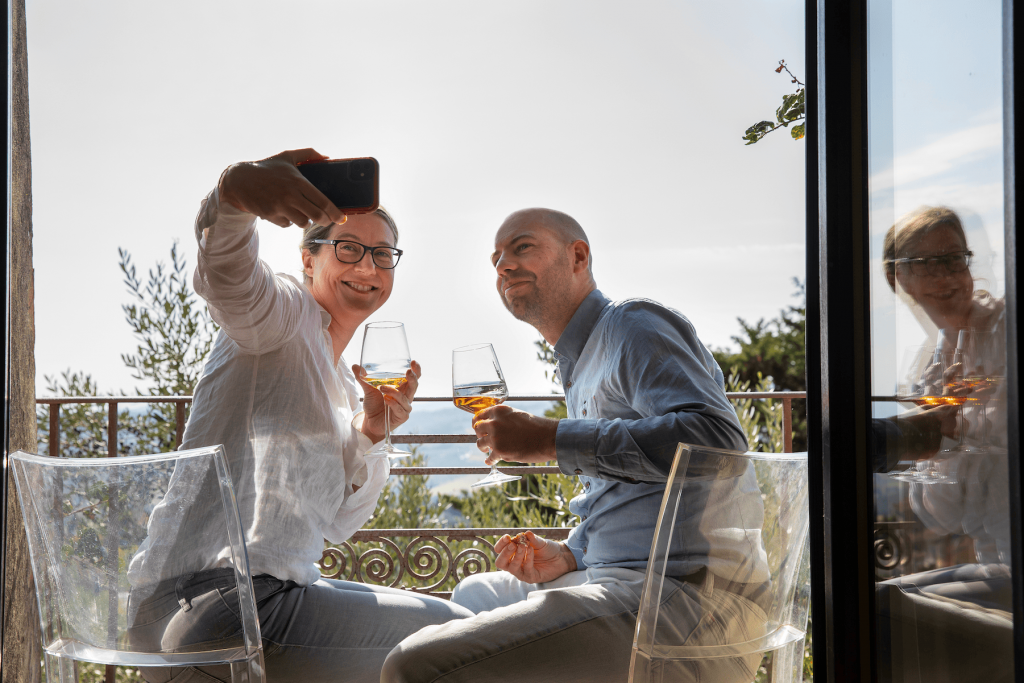The sun’s shining, the poppies are out and the broom is filling the air with scent as I wind my way around the wineries of San Gimignano. The mercury might be pushing 35 degrees, but a breeze thankfully flows in through the car windows. The purpose of my visit to the countryside surrounding the town of towers is to taste local white wine Vernaccia di San Gimignano.
History of Vernaccia di San Gimignano
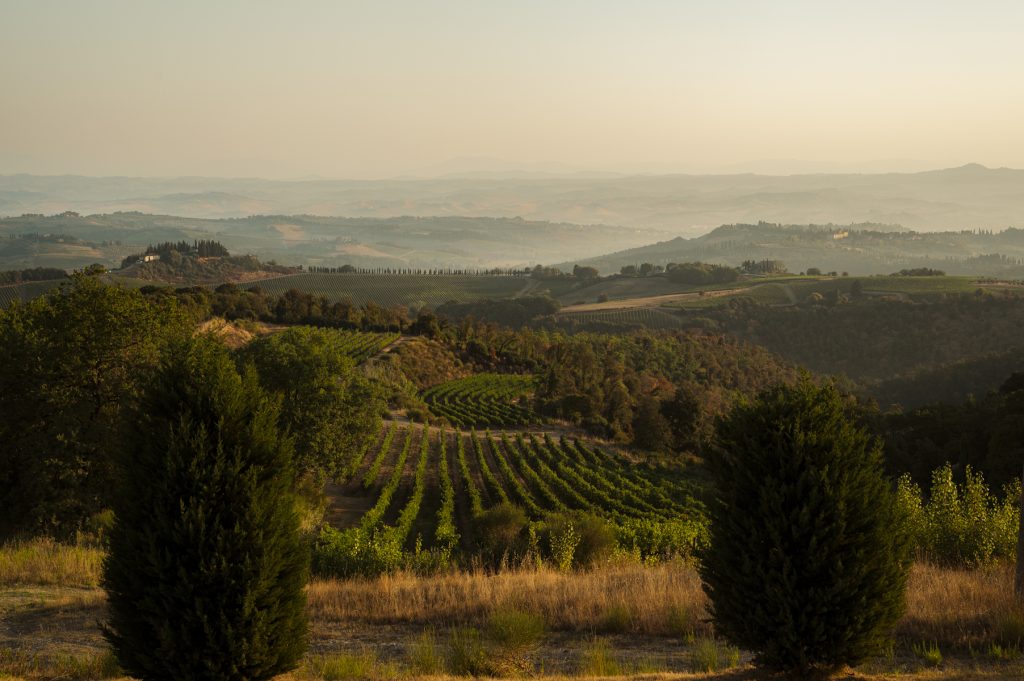
First mentioned as Vernaccia di San Gimignano in tax returns found in the town’s archives dating to 1276, the local white wine was a favourite of Lorenzo de’ Medici, who is said to have had it sent to Florence in 1465, and in 1487 Lodovico il Moro went as far as having 200 flasks delivered for his son’s wedding to Isabella, daughter of King Alfonso of Naples, as well as planting 500 vines in Lombardy. Dante even name-dropped the wine in the Divine Comedy as Pope Martino IV ends up in Purgatory for drowning eels in Vernaccia, while Geoffrey Chaucer recommended it to an elderly man named Januarie on his wedding night: He drinkkith ypocras, clarre, and vernage / of spices hote, to encrese his corrage. Later, in 1610, Francis Scott, the author of the first guidebook to Italy for travellers on the Grand Tour, described San Gimignano as “a particular little town, due to the production of fine wines and the fact that it is adorned by splendid temples”. Florence boasts a tribute to Vernaccia in Giorgio Vasari’s Allegory of San Gimignano and Colle Val d’Elsa in the Salone dei Cinquecento and Michelangelo Buonarroti wrote verses about the wine in 1643.
Vernaccia di San Gimignano today
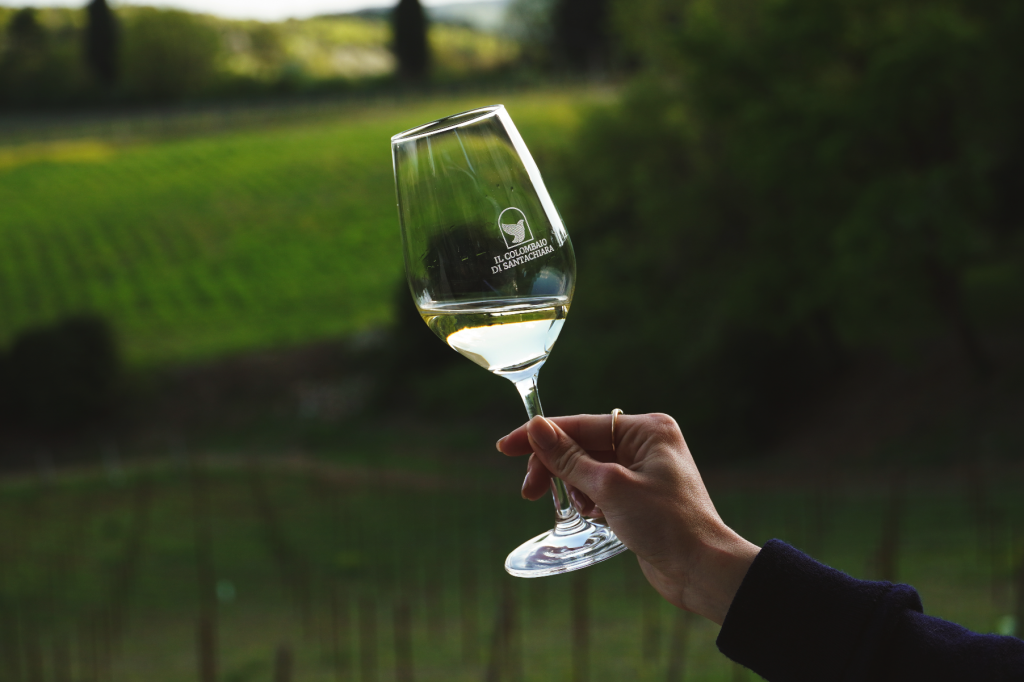
In more recent times, Vernaccia di San Gimignano became the first wine to gain DOC status in 1966, predating even the likes of Brunello and Barolo, before going on to acquire DOCG status in 1993. My enduring memory of Vernaccia is one of puzzlement. One scorching July day in Siena’s piazza del Campo 20 years ago, feeling parched but wanting to embrace the aperitivo hour, a glass of local white wine seemed like a good idea. It went down easily enough with its transparent hue, crisp nose and apple-like flavours, but then the alcohol started to show its weight, sparking additional heat to an already uncomfortable Tuscan evening.
Often described as a “red in white clothing”, Vernaccia di San Gimignano is anything but a straightforward wine. It loves the sun and can even resist constant drought, something that is becoming the norm due to climate change. The heat merely intensifies the body, which means that we will be seeing DOCG wines reaching even higher alcohol levels in years to come. The 2020 vintage is a prime example of Vernaccia’s ability to withstand water stress in the hottest of summers. In some instances, it’s also able to survive sudden spring frost, given that budbreak is later than for other white grapes, although third-generation farmer Sarah Fioroni, of Fattoria Poggio Alloro, recalls April 8 and 9, 2021. She and her family spent worried nights lighting fire pits to warm the air as temperatures dropped to minus six degrees. “It felt like heroic work as, from 1 to 6am, we kept an eye on the fires, which were close to the barn that houses our cows and pigs. In the morning, however, we discovered that the frost had ‘burned’ some of the buds.”
“It felt like heroic work as, from 1 to 6 am, we kept an eye on the fires, which were close to the barn that houses our cows and pigs. In the morning, however, we discovered that the frost had ‘burned’ some of the buds.”
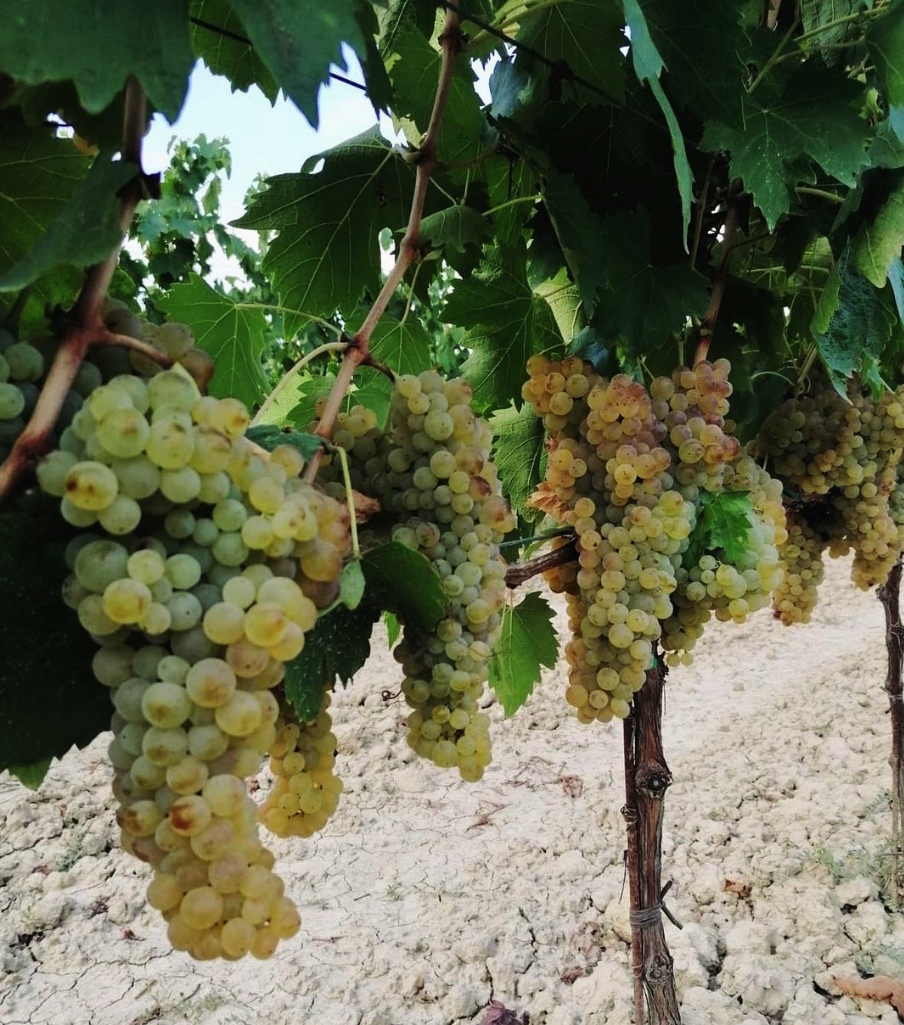
Agriculturists are adapting to the challenges of climate change; they have to in order to survive. Alessio Logi, the youngest of three brothers whose farmer father established Il Colombaio di Santa Chiara, in the picturesque village of San Donato, southwest of San Gimignano, is mindful of the future as he makes plans to plant international varietals on an airy, north-facing hilltop, where he randomly discovered a perfect vein of chalk while digging up an old olive tree.
As I move from winery to winery, from northeast to southwest of San Gimignano, the soils keep changing, from clay to sand, tufa and crumbly limestone, although one feature remains the same: the centuries-old fossils dating back four or five million years ago. “Walking in our vineyard is like walking on a Pliocene beach,” explains Marialuisa Cesani, whose grandparents moved here from the Marche in 1949, initially to produce olive oil. “There’s blue and grey clay, plus an abundance of fossils and smaller shells.” The Cesani family’s approach to climate change was to stop ageing its Riserva in oak back in 2013 (they are based in the driest part of the appellation), so as to keep the Vernaccia di San Gimignano “fresh, with low acidity and bring out the grape’s true soul”.
All the winemakers agree on the native varietal’s ability to age. Camelia Lazar, sales and marketing manager, at Panizzi, waxes lyrical about savouring a 15- and 20-year-old Vernaccia and Marialuisa Cesani talk about bottles that have reached their peak 10 to 15 years after the harvest
Although there’s a large amount of “souvenir wine” still knocking about in the town’s touristy shops, Vernaccia di San Gimignano is enjoying a sea change in terms of quality compared with 20 years ago. The production guidelines state that the DOCG wines must contain at least 85% of Vernaccia di San Gimignano, allowing 15 per cent of other non-aromatic white grapes, but all of the wines I tasted during my day touring the wineries were purebred Vernaccia di San Gimignano. Apple and nectarine notes are evident in the baseline DOCGs with a lovely mineral dusting that borders on saltiness, while the single vineyard wines err on the exotic with layers of complexity and the Riservas are serious, almost professorial, requiring repeated sips in solitude, perhaps wearing spectacles to admire the golden glints. All would pair well with myriad dishes, even demanding, heavily spiced international cuisine.
The wines might be studious, but the beauty of this part of Tuscany is plain for all to see. As I drive along the country lanes, the medieval towers of San Gimignano continue to appear around a bend as nonagenarians play cards at their local circolo and perfectly maintained tabernacles have been a way of life for centuries, just like Vernaccia, the local white wine since the Middle Ages.
Wineries to visit in San Gimignano
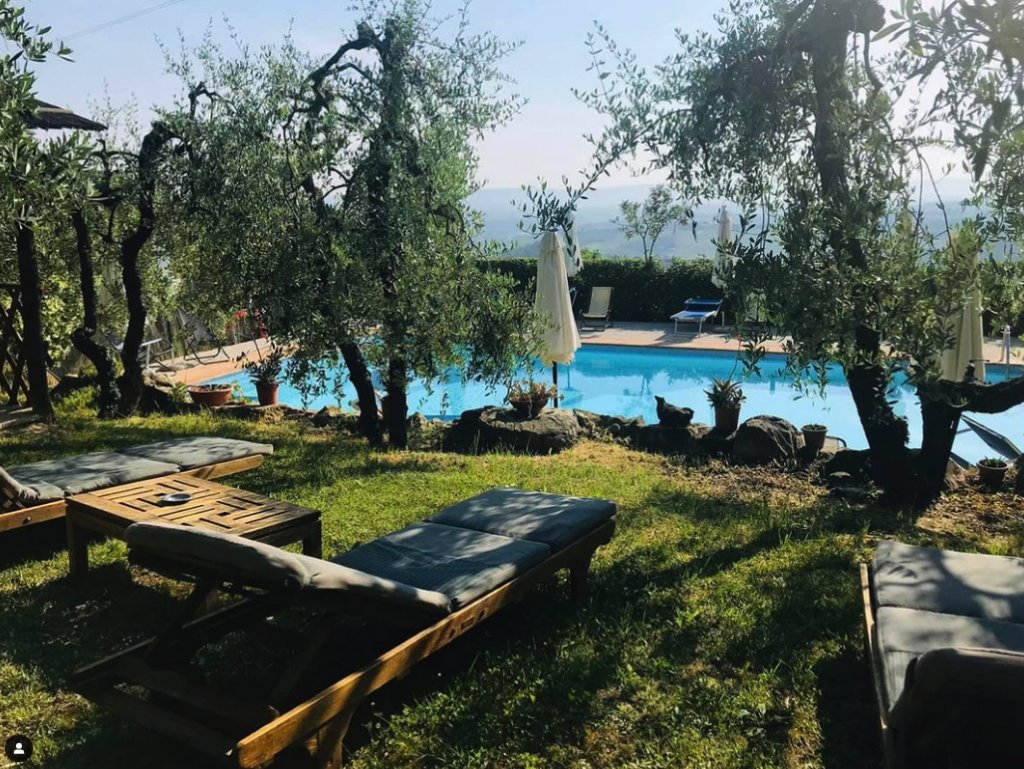
Fattoria Poggio Alloro is one of the first wineries you encounter coming from Florence due to its position five kilometres northeast of San Gimignano. The family-run farm is also one of the most popular for its views of the medieval towers on the horizon, quintessentially Tuscan restaurant and educational farm activities for kids. Encompassed by rolling hills and lush fields, the all-organic estate sprawls over 250 hectares, 70 of which are planted to Vernaccia di San Gimignano and other grapes, while the rest is used to grow wheat, spelt and other grains as well as being dotted with olive trees. Holidaymakers unwind by staying in the simple but sincere restored farmhouse with its one apartment and ten rooms, plunging into the pool and tucking into a breakfast consisting of milk from the farm’s dairy cows, just picked fruit and homemade cakes warm from the oven. The restaurant serves family recipes and simple seasonal dishes like panzanella that will have you oohing. In Italy’s boom years after the Second World War, Umberto, Amico and Bernardo Fioroni moved from the Marche region to San Gimignano to work as sharecroppers. In 1973, the owner decided to sell the farm to the brothers and the family has never looked back. Today, Fattoria Poggio Alloro continues its vocation as a working farm, while welcoming tour groups and running a successful international wine club.
Must taste: Vernaccia di San Gimignano DOCG Selezione “Il Nicchiaio” 2021
Southwest of San Gimignano, Il Colombaio di Santa Chiara adds a dash of style in the hamlet of San Donato, where the Logi family is making some of the finest Vernaccia around. Once a breeding farm established by father Mario, the wine estate came about in 2002 when his son, Alessio, had already embarked on his oenological studies. Alessio’s older brothers Giampiero and Stefano also run the business. Now, weathered steel elegance repeats the winery’s contemporary labels at Locanda dei Logi, which consists of six sumptuously designed rooms (the mirrors in the bathroom can be swiveled to see the scenery better) and tasting rooms with creative touches. Several experiences are available on the estate, including lunch on the restaurant’s scenic terrace or a much-recommended Jeep tour through the vineyards in which the brothers enthusiastically explain their plans for the future. They’re ambitious, such as crafting a Chardonnay-Vernaccia IGT blend and building a design-driven cellar that fits with the landscape, but you get the feeling that these guys are on a collision course with destiny.
Must taste: Vernaccia di San Gimignano DOCG Campo della Pieve 2020
Panizzi has been innovating Vernaccia di San Gimignano since 1989 as former president of the consortium, Giovanni Panizzi, always focused on quality and longevity. Prior to his death in 2010, an agreement was made for the running of the winery to be passed to Simone Niccolai, who continues to uphold the same values. We start our visit at Giovanni Panizzi’s former house, visiting the 360-degree Santa Margherita vineyard with a view of the towers of San Gimignano, before tasting the impressive wines in the barn. Tastings usually take place at the Larniano farm, of medieval origin, with its Longobard tower dating to the year 1000.
Must taste: Vernaccia di San Gimignano Vigna Santa Margherita DOCG 2021
Northwest of San Gimignano, near Pancole, Cesani is a friendly family-run winery with rustic yet well appointed farmhouse accommodation and tasting experiences. Guido and Annunziata Cesari bought the estate in 1949 and their grand-daughters Letizia and Marialuisa now manage the 30-hectare winery, producing 110,000 bottles of top-quality Vernaccia di San Gimignano (plus other wines) every year. Cesani organizes 90-minute cellar tours three times a day from April to November in Italian and English.
Must taste: Vernaccia di San Gimignano D.O.C.G. Riserva Sanice 2018
Taste Vernaccia di San Gimignano at the Vernaccia di San Gimignano Wine Experience La Rocca
Currently celebrating its 50th anniversary, the appellation’s consortium (Consorzio del Vino Vernaccia di San Gimignano) manages the tasting centre devoted to Vernaccia di San Gimignano and typical local produce at the Rocca di Montestaffoli in San Gimignano town centre. Attend the Top Masterclass for a two-hour guided tasting of six wines, the Superior Wine Tasting or the 45-minute Easy Wine Tasting of four wines.
